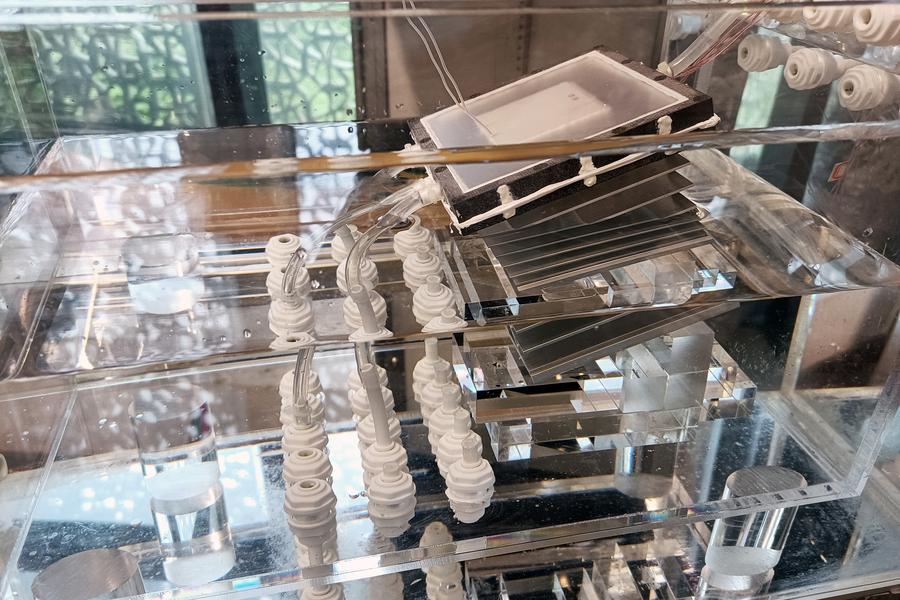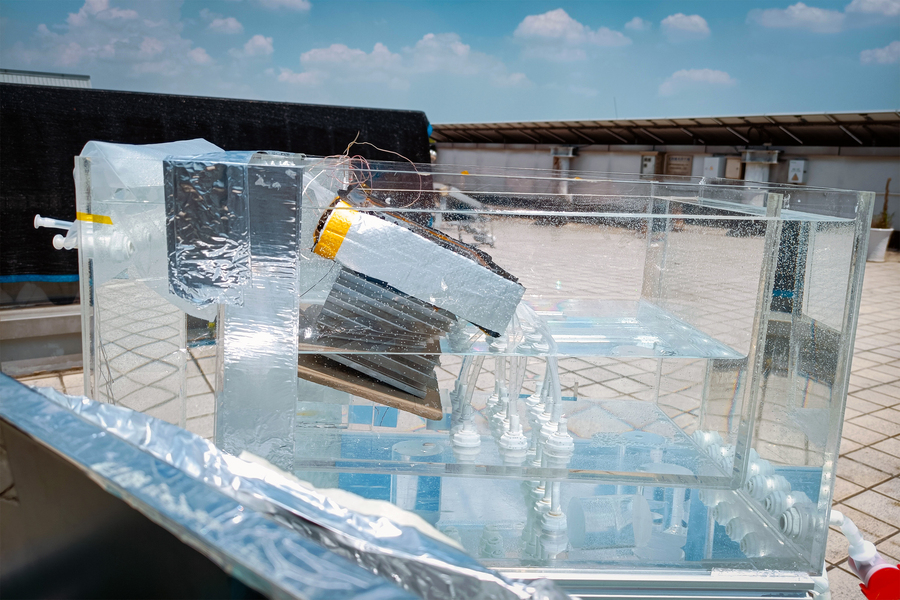Desalination system could produce freshwater that is cheaper than tap water
Published on by Water Network Research, Official research team of The Water Network in Technology
MIT engineers and collaborators developed a solar-powered device that avoids salt-clogging issues of other designs.
Jennifer Chu | MIT News

Caption:
A tilted ten-stage prototype is located into a “boat-like” reservoir.
Credits:
Credit: Jintong Gao and Zhenyuan Xu

Caption: Outdoor test of the prototype under natural sunlight
Credits: Credit: Jintong Gao and Zhenyuan Xu
Engineers at MIT and in China are aiming to turn seawater into drinking water with a completely passive device that is inspired by the ocean, and powered by the sun.
In a paper appearing today in the journal Joule, the team outlines the design for a new solar desalination system that takes in saltwater and heats it with natural sunlight.
The configuration of the device allows water to circulate in swirling eddies, in a manner similar to the much larger “thermohaline” circulation of the ocean. This circulation, combined with the sun’s heat, drives water to evaporate, leaving salt behind. The resulting water vapor can then be condensed and collected as pure, drinkable water. In the meantime, the leftover salt continues to circulate through and out of the device, rather than accumulating and clogging the system.
The new system has a higher water-production rate and a higher salt-rejection rate than all other passive solar desalination concepts currently being tested.
The researchers estimate that if the system is scaled up to the size of a small suitcase, it could produce about 4 to 6 liters of drinking water per hour and last several years before requiring replacement parts. At this scale and performance, the system could produce drinking water at a rate and price that is cheaper than tap water.
“For the first time, it is possible for water, produced by sunlight, to be even cheaper than tap water,” says Lenan Zhang, a research scientist in MIT’s Device Research Laboratory.
Attached link
https://news.mit.edu/2023/desalination-system-could-produce-freshwater-cheaper-0927Taxonomy
- Desalination
- Solar Desalination